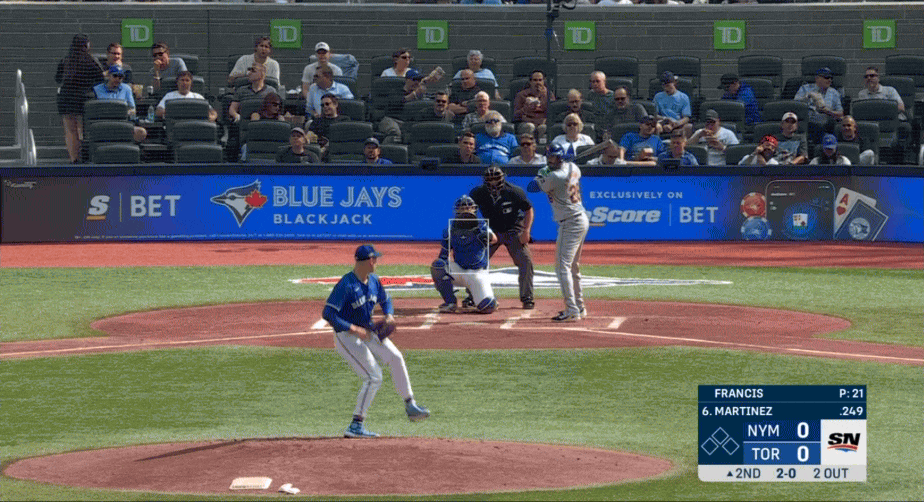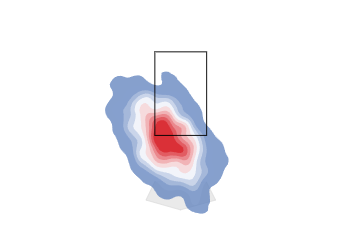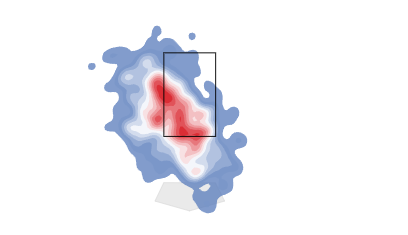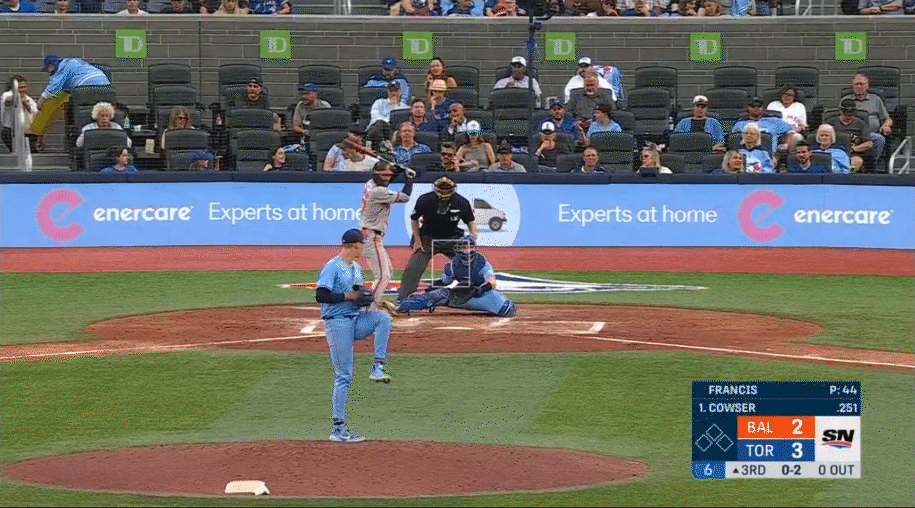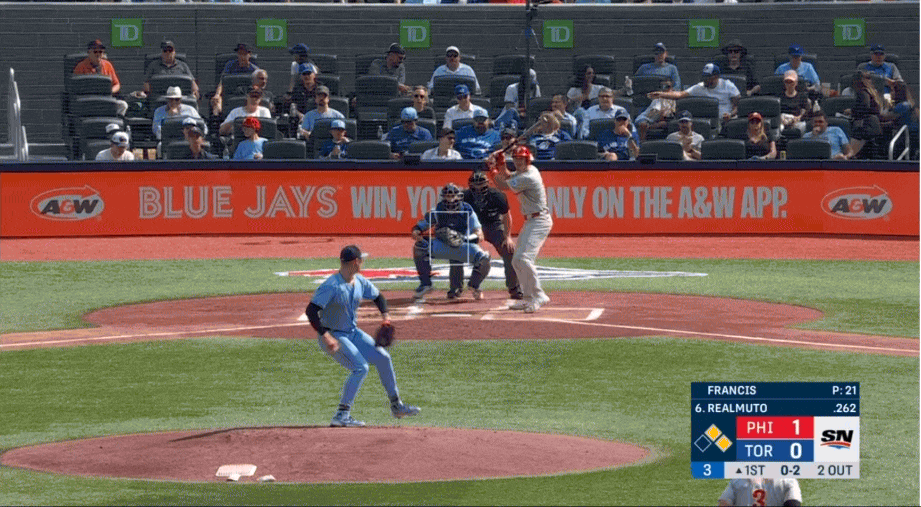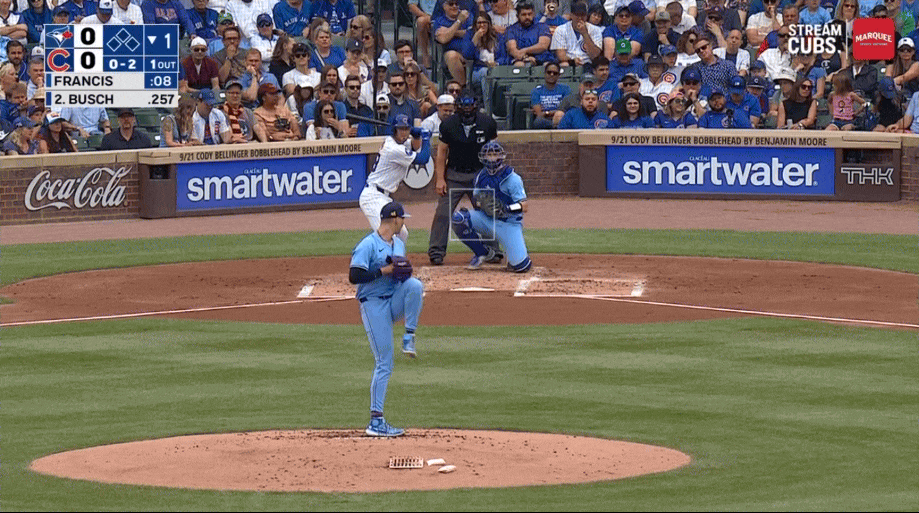[ad_1]
When Bowden Francis had a no-hit bid broken up in the ninth inning for the second time in 2024 last Wednesday, he became the first pitcher since Nolan Ryan to have multiple calls that close in one season.
The 28-year-old is in the midst of a run so successful it has drawn comparisons to guys like Pedro Martinez, Randy Johnson, Johan Santana, Clayton Kershaw and Justin Verlander. There are some ways in which his hot streak is breaking new ground.
His effectiveness since returning to the Toronto Blue Jays rotation is extraordinary and difficult to comprehend in the context of his entire professional track record before late July.
One of the best ways to understand it might be to compare him to a pitcher who isn’t a legend of the game like the pitchers above, but undoubtedly means more to most Blue Jays fans: Marco Estrada.
What Francis is doing at the moment has a lot of the same DNA as Estrada’s best stretches with the Blue Jays. In fact, the soft tosser enjoyed an eight-start stint between May and June in 2016 that had a number of similarities to the emerging right-hander’s recent run — even if it lacked the proximity to no-hitters.
|
Pitcher |
IP |
H |
BABIP |
HR |
K |
|
Estrada |
55.2 |
27 |
.143 |
8 |
51 |
|
Francis |
54 |
23 |
.119 |
8 |
48 |
The big difference between the two was that Estrada struggled with walks at times allowing 21 free passes to Francis’s six, which helps explain why his ERA in this stretch (2.75) was less eye-opening than the newcomer’s (1.83).
While the chart above isn’t much more than a statistical quirk, the similarities between the two pitchers are notable — and could provide insight into how Francis can remain an effective starter, even if keeping up his current pace isn’t a reasonable expectation.
Both pitchers possess fastballs with dubious velocity — and while Estrada’s lack of heat was notable (88.5 mph in 2016) it wasn’t much lower than the league average for a SP at the time (-3.5 mph) than Francis was in his latest start against the New York Mets (-3.1 mph).
Despite that, each found effectiveness with the heater by commanding it well at the top of the zone to force popups and lazy flyouts. Right now Francis has a groundball rate (34.6 per cent) that exactly matches Estrada’s 2016 number, and his launch angle in his last eight starts (21.0 degrees) is in line with the former Blue Jays’ average from that year (21.3 degrees).
Since Francis was reinserted into the Blue Jays rotation, he’s forced the second-most popups on fastballs in the majors (16) and his ability to stick to the top of the zone makes it extremely difficult for opponents to square up.
In his near no-hitter against the Mets, he got four popups on high fastballs, most notably this one that went a mile in the air off J.D. Martinez’s bat despite a favourable 2-0 count that may have had him looking heater.
Like Estrada, Bowden is pairing his low-velocity heat at the top of the zone with a plus offspeed pitch that tunnels well with it. In Francis’s case, that pitch is being characterized as a splitter, making it easy to imagine it as a pitch normally located below the zone, located the way Kevin Gausman’s is:
Instead, it creeps much higher up, looking more like a changeup from a location standpoint:
… which invites the comparison to Estrada’s changeup (2016 location below):
Estrada’s changeup was a truly special pitch that consistently embarrassed opponents, while the Francis splitter is a developing offering that he only found in spring training. That’s not a fair one-to-one comp.
At the same time, the way he is using it is reminiscent of the former Blue Jays because he’s willing to leave it in the zone — even with two strikes — confident that opposing hitters can’t time it up.
So far, he’s been right about that as he’s thrown the pitch 261 times and no one has gotten an extra-base hit. Swinging at air has been a consistent theme:
There will come a time when a hung splitter has nasty results for Francis, but it hasn’t come yet — and keeping it around the zone has helped drive a healthy strike rate (59.0 per cent) for a pitch type that can often result in uncompetitive balls way below the zone for other pitchers.
When it comes to Francis, the biggest question is how much of his current success he can carry forward, particularly when it’s undeniable that he’s enjoying extraordinary results on balls in play.
His greatest strength lately has been pounding the zone to avoid walks (1.00 BB/9 in his last eight starts) while simultaneously forcing the kind of soft contact that turns a disproportionate amount of balls in play into outs. Those things don’t always go hand-in-hand as more aggression in the zone can easily lead to more hard-hit balls against.
Although Estrada never avoided walks at quite the rate Francis is now, he still tended to be an above-average pitcher in that regard, and his best years in Toronto represent a blueprint for the up-and-comer. Between 2015 and 2016 his ERA ranked 18th among qualified pitchers (3.30) despite a middling strikeout rate (7.46 K/9) because he ran the kind of BABIP (.224) that challenged conventional wisdom in a sample as large as 357 innings.
The Blue Jays would be ecstatic if Francis came anywhere near those numbers, but what he’s doing right now is reminiscent of Estrada. That recipe looks like one he can broadly follow. Francis has shown he can spot his low-velo fastball at the top of the zone to force harmless outs in the air, while pairing it with a nasty off-speed pitch that consistently threatens the zone, and messes up opponents’ timing.
His lack of a devastating breaking ball limits his strikeout upside, although his slider has been a weapon against righties at times. It’s also notable that during his last eight masterful starts, Francis has conceded quite a few home runs (1.33 HR/9). That comes with a low-velo profile where command is inextricably linked to production, and any meatball is a homer waiting to happen.
Even during Estrada’s fantastic two-year run in 2015 and 2016, his HR/9 (1.18) ranked 58th out of 76 qualified pitchers. Those homers just didn’t hurt him much because getting base runners against him was such an ordeal.
That has been the case with Francis since late July as well, but it’s impossible to know just how true that will be in the weeks — and potentially years — to come.
His dominance has been difficult to fathom, and the way he’s made it happen through nullifying opposing batted balls is peculiar. The fact the Blue Jays had an excellent experience with a pitcher who made a living with a similar method is no proof that Francis will become a rotation staple like Estrada did.
It does show that thriving with his unorthodox style wouldn’t be as unprecedented as some of his recent statistical accomplishments.
[ad_2]

